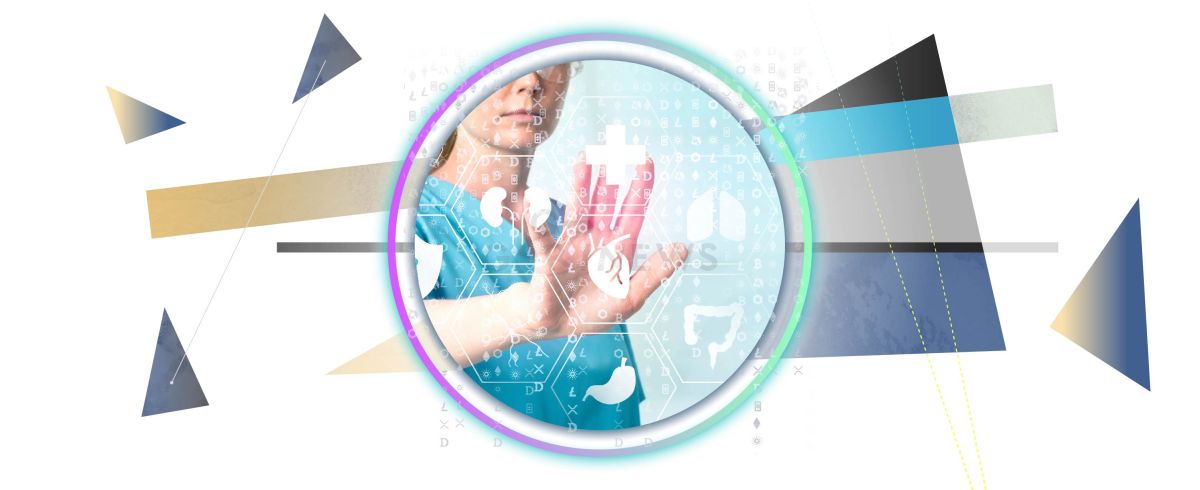Blockchain in healthcare

Blockchain technology is used in many fields, including medicine. How do healthcare professionals and patients benefit from blockchain platforms?
On this page
Blockchain in healthcare: the prospects of technology implementation
The unique features of blockchain technology make it the basis for many startups. Some of them are pretty original. For example, there are blockchain platforms for carsharing, payment for self-driving cars, confirmation of the authenticity of antiques, art, and luxury goods.
However, innovative technology has become increasingly common in more familiar spheres everyone encounters. One of these is medicine. What opportunities does blockchain bring to healthcare professionals and patients?
Increased transparency and efficiency of research
Blockchain technology can potentially transform the usual conduct of clinical and biomedical research. Its implementation makes it possible to:
- promptly obtain patients’ consent to the use of their data;
- work only with reliable information received from various sources (including other medical institutions where patients were observed);
- clearly follow the chronology by focusing on timestamps;
- obtain real-time data from related areas (environmental and epidemic situation, specifics of medications used and supply chain conditions, patient care, adherence to prescribed recommendations, etc.).
Blockchain as the basis for research prevents data falsification at all stages and provides the most reliable results.
Data storage
In most cases, data about a patient, existing pathologies, and performed treatment are stored in paper and electronic form in medical institutions. However, this format has many disadvantages.
Medical records may contain unreliable information, get lost, or be transferred without the patient’s explicit consent to representatives of third-party organizations. Is it possible to avoid such situations in modern medicine? Yes, it is, with the help of specialized blockchain platforms!
Why is using blockchain to store medical data a significant step forward?
1. Patients store their own data, are responsible for them, and provide them to third parties such as doctors, researchers, pharmacy staff, or insurance companies.
2. Data is securely protected from accidental or intentional loss and hacking attacks.
3. Storage of reliable information with confirmation of its authenticity and source.
4. Impossibility of modifying the data both by the patient and other members of the healthcare industry who access them.
An example of a blockchain project used to store data in medicine is Medrec:M. It is a comprehensive telemedicine and remote care platform designed to organize efficient healthcare for users and their families.
Among Medrec:M features are not only data storage but also control and analysis of vital signs, disease symptoms, communication with doctors, reporting, and remote monitoring of patients’ conditions
Supply control and combat counterfeiting
Blockchain can be used to manage supply chains in various areas, including medicine. This is important not only to optimize the production and delivery of medications but also to combat counterfeiting.
According to WHO statistics, about 10% of medicines in developing countries are counterfeit or do not meet current production, transportation, and storage standards. Patients’ use of such medications is at best ineffective and at worst causes additional harm to their health.
Blockchain platforms bring together all parties involved in the manufacturing and transportation of medicines, from manufacturers and employees of logistics companies to doctors, pharmacists, and patients.
Active participation of the parties and free access to information (manufacturer, serial number, expiration date, etc.) minimize the likelihood of counterfeits and their appearance in pharmacies and prescriptions.
Optimization of insurance and reimbursement processes
One of the most promising uses of blockchain in healthcare is insurance. Implementing the technology will help automate a significant part of the procedure of confirming the insurance case and payment of funds, saving time and effort for all parties.
Particular attention should be paid to the storage of reliable information. Data on specialized blockchain platforms cannot be changed, making it impossible to commit fraud to obtain monetary compensation.
Conclusion
Medicine is a rather conservative sphere in which the emergence of innovation is a long and resource-consuming process. New technologies require purchasing equipment for all medical facilities, connecting them into one network, training employees, and increasing their cybersecurity knowledge.
Blockchain technology can be used in several priority areas of medicine, and its benefits can greatly simplify routine processes for doctors, medical executives, insurance companies, and, of course, patients. Healthcare officials should consider this when organizing the work of individual departments.
The content on The Coinomist is for informational purposes only and should not be interpreted as financial advice. While we strive to provide accurate and up-to-date information, we do not guarantee the accuracy, completeness, or reliability of any content. Neither we accept liability for any errors or omissions in the information provided or for any financial losses incurred as a result of relying on this information. Actions based on this content are at your own risk. Always do your own research and consult a professional. See our Terms, Privacy Policy, and Disclaimers for more details.

























